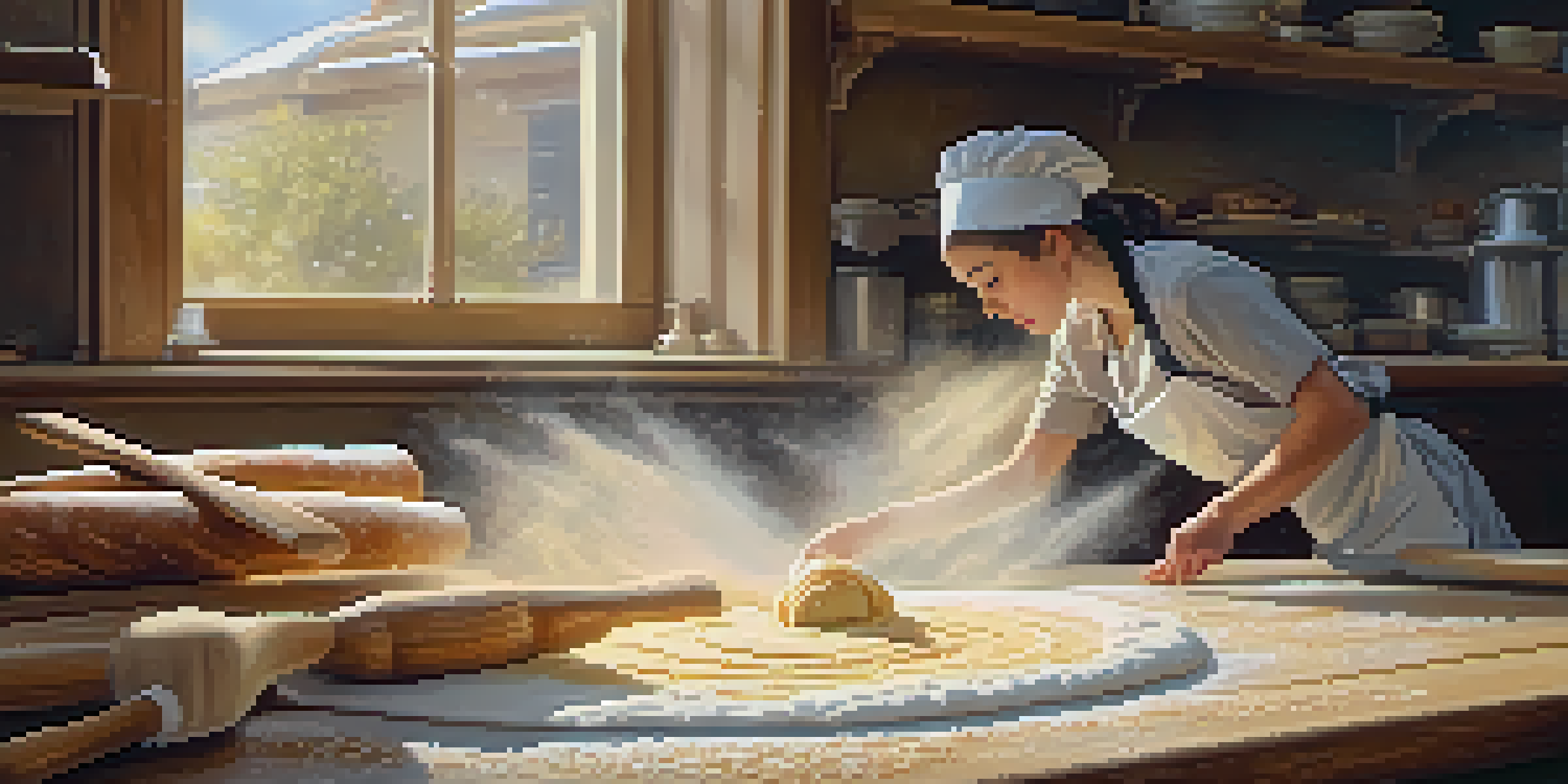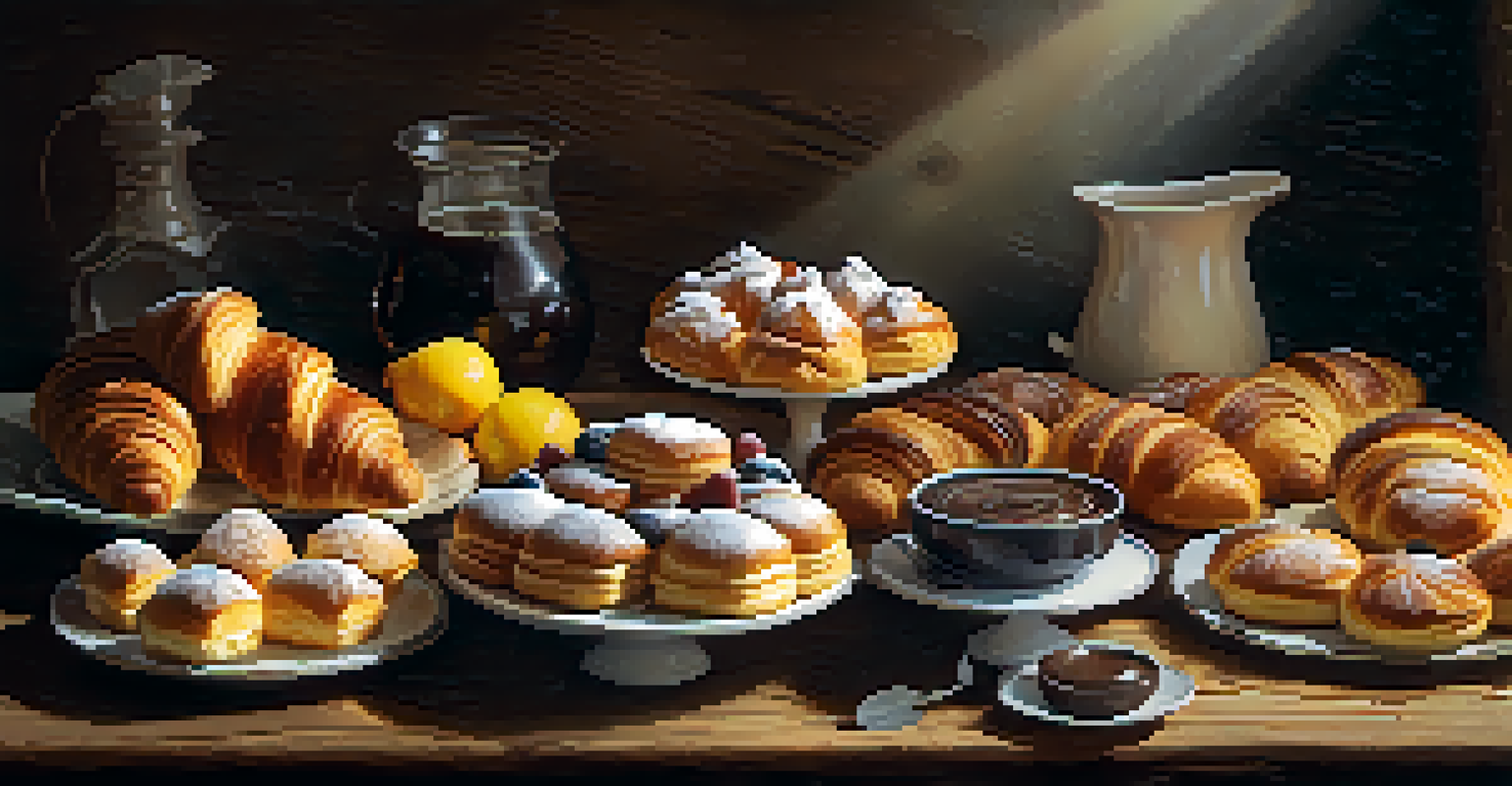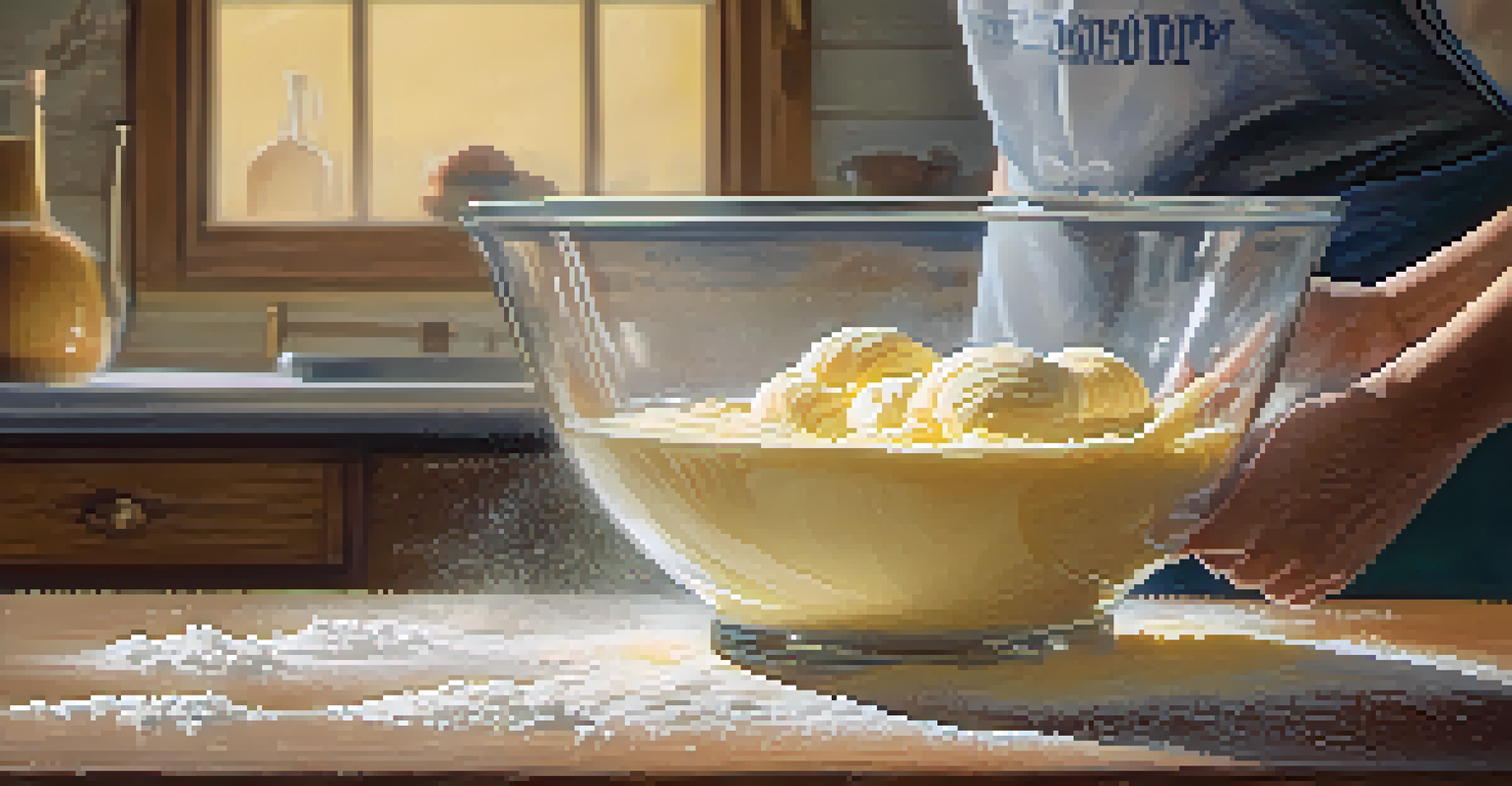Essential Pastry Techniques Every Aspiring Baker Should Know

Understanding the Basics of Pastry Dough
Before diving into the world of pastries, it's crucial to understand the different types of pastry dough. The most common types include shortcrust, puff, and choux dough, each serving unique purposes in baking. Shortcrust is typically used for tarts and pies, while puff pastry is known for its flaky layers, making it perfect for pastries like croissants.
Baking is both an art and a science. It requires precision and creativity, and the best results come from a combination of both.
Knowing how to make these doughs from scratch can significantly enhance your baking skills. For instance, mastering shortcrust requires a delicate balance of flour, fat, and water to create that perfect, crumbly texture. Meanwhile, puff pastry involves the technique of laminating dough, which can feel like a workout but results in a rewarding, airy pastry when done right.
Practice is key when it comes to pastry dough. Don't be discouraged by initial failures; each attempt brings you closer to understanding the nuances of dough-making. Remember, even the best bakers started with a few flops before they perfected their craft!
Mastering the Art of Mixing and Folding
Mixing and folding are two critical techniques in pastry making that can make or break your final product. Over-mixing can lead to tough pastry, while under-mixing can result in dry textures. It's all about finding that sweet spot where the ingredients come together just right.

When mixing, whether you're using a stand mixer or your hands, aim for a homogeneous mixture without overworking the dough. On the other hand, folding is essential for incorporating air into batters, especially for recipes like sponge cakes or soufflés. This technique gently combines ingredients without deflating the air you've worked to incorporate.
Master Different Dough Types
Understanding various pastry dough types like shortcrust, puff, and choux is essential for successful baking.
A simple tip: always use a light hand when mixing and folding. Think of it like a dance—gentle and fluid movements lead to a harmonious blend of flavors and textures. With practice, these techniques will become second nature, allowing you to create pastries that are both beautiful and delicious.
The Importance of Temperature in Baking
Temperature plays a pivotal role in baking, affecting everything from dough consistency to baking times. For instance, using cold butter in shortcrust pastry is essential for achieving that tender, flaky texture. Conversely, warm ingredients can lead to a more cohesive dough that’s perfect for certain cakes and breads.
The secret to baking is to always remember that it’s about the love you put into it, not just the ingredients.
Moreover, understanding oven temperature can drastically change the outcome of your pastries. Some pastries, like puff pastry, require high heat to achieve that desirable rise, while others need a gentler temperature for even baking. Investing in an oven thermometer can help ensure accuracy in your baking.
Incorporating this knowledge of temperature will elevate your baking skills. Think of it like tuning a musical instrument—finding the right temperature settings allows you to create a symphony of flavors and textures in your pastries.
Perfecting the Art of Rolling and Shaping Dough
Rolling and shaping dough is where creativity meets technique. Whether you’re preparing a pie crust or rolling out puff pastry, achieving an even thickness is crucial. This ensures uniform baking and prevents uneven textures that can detract from the final presentation.
When rolling out dough, use a well-floured surface and rolling pin to prevent sticking. Take your time and roll from the center outward for an even thickness. If you’re making intricate shapes, don’t hesitate to use cookie cutters or molds for a professional touch.
Temperature Affects Baking Results
The temperature of ingredients and your oven significantly influences the texture and rise of your pastries.
Remember, shaping is not just functional but also an opportunity to express your personal style as a baker. Experiment with different shapes and designs—who knows, you might discover a signature style that sets your pastries apart!
Baking Techniques: Timing and Techniques Matter
Baking isn’t just about following a recipe; it’s also about mastering timing and techniques. Each pastry requires specific baking times, and knowing when to rotate your tray can make a significant difference. For example, cookies might need to be turned halfway through to ensure even browning.
Using a timer is essential, but also rely on your senses—look for visual cues like golden edges or a firm surface. This practice will enhance your intuition as a baker, helping you to judge doneness without solely relying on time.
As you gain experience, you'll learn to recognize the subtle signs of perfectly baked pastries. Think of it as developing a sixth sense for baking; the more you practice, the better you'll become at achieving that ideal finish.
The Role of Flavoring and Garnishing in Pastry
Flavoring and garnishing are the finishing touches that can elevate your pastries from good to extraordinary. Simple ingredients like vanilla extract, citrus zest, or spices can add depth to your dough and fillings. Experimenting with different flavor combinations can lead to delightful surprises.
Garnishing is equally important; a well-placed fruit slice, a dusting of powdered sugar, or a drizzle of chocolate can enhance both the appearance and taste of your pastries. Think of garnishing as the art of storytelling—it’s your chance to add personality and flair to your creations.
Troubleshoot Common Baking Issues
Identifying and addressing common pastry problems can help you become a more confident and skilled baker.
So don’t shy away from getting creative with flavors and garnishes. The right combination can transform your pastries into a true culinary masterpiece that not only looks good but tastes fantastic!
Troubleshooting Common Pastry Problems
Even the most seasoned bakers encounter issues with pastries from time to time. Common problems include soggy bottoms, overcooked edges, or dough that just won't rise. Understanding these issues and their causes can help you troubleshoot effectively.
For instance, a soggy bottom can often be attributed to underbaking or using a wet filling. To combat this, consider pre-baking your crust or using a thicker filling. On the other hand, if your dough isn't rising, ensure that your baking powder or yeast is fresh and that your dough has been given enough time to proof.

Having a troubleshooting mindset allows you to learn from mistakes instead of feeling defeated. Baking is a journey of trial and error, and each challenge you face makes you a more skilled and confident baker.